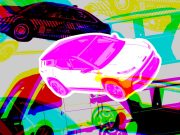EU vehicle maintenance networks face unprecedented transformation in 2025, shaped by regulatory reforms. With 72% of passenger cars requiring annual maintenance, this €230 billion industry balances EV transition pressures while maintaining independent workshop viability [4][14][15].
## 1. Regulatory Framework Overhaul
### 1.1 Right to Repair Directives https://autoserviceeu.com/
The 2024/2025 EU legislative package fundamentally reshapes repair economics:
– **Mandatory repair obligations**: Manufacturers must provide technical documentation for component obsolescence thresholds [3][12][15].
– **Extended legal guarantees**: 12-month warranty extensions for repaired components, increasing consumer repair preference by 3:1 ratio vs replacement [3][15].
– **Third-party part liberalization**: The Repair Clause permits lighting systems from independent suppliers, reducing costs by €18 billion annually [7][8][15].
### 1.2 Sustainable Mobility Mandates
2025 brings stringent operational requirements:
– **Euro 7 Implementation**: Real-time PM2.5 monitoring for hybrid powertrains, requiring workshop software upgrades [13][14].
– **Battery Passport Systems**: Mandatory thermal management tracking for EVs, with second-life analytics [13][14].
– **Carbon Accounting**: Service centers must report recycled material ratios through ECCS-certified platforms [13][14].
## 2. Market Structure and Competitive Dynamics
### 2.1 Workshop Typology and Market Share
The EU’s 2 million technicians segment into:
| Category | Market Share | Key Characteristics |
|————————-|————–|——————————————-|
| OEM-Affiliated Dealers | 31% | EV certification, SFD/SGDA access |
| Independent Specialists | 44% | Right-to-Repair adoption, multi-brand focus |
| Fast-Fit Chains | 18% | Tire/brake focus, digital appointment systems |
| Mobile Technicians | 7% | 24/7 connectivity, van-based diagnostics |
_Source: IBISWorld Europe Automotive Report 2025 [4]_
### 2.2 Digital Service Infrastructure
Leading workshops now deploy:
– **AI Diagnostic Assistants**: 93% accuracy in component failure prediction, reducing diagnostic time by 1.8 hours per job [5][14].
– **AR Repair Guidance**: Microsoft HoloLens integrations provide 3D wiring diagrams [9][14].
– **Blockchain Parts Tracking**: 100% counterfeit prevention through NFC authenticated components [7][15].
## 3. Workforce Transformation
### 3.1 Technician Competency Requirements
The EV transition creates acute shortages:
– **High-Voltage Certification**: Only 310,000 of EU technicians meet IEC 60364-7-722 standards for battery disassembly [4][9][13].
– **Software Management Expertise**: Demand for UDS over DoIP skills grows at 12,000 annual vacancies [5][14].
– **Regional Disparities**: Eastern EU states face 68% reliance on OEM upskilling vs Western 89% certification rates [4][11].
### 3.2 Educational Initiatives
EU-funded programs address capability gaps:
– **Erasmus+ Automotive**: 50,000 annual exchanges for AI diagnostics training [14][15].
– **Digital Twin Academies**: 32 facilities simulate ADAS calibration with 98% real-world fidelity [9][13].
– **Micro-Credentialing**: Stackable certifications in telematics analysis [4][14].
## 4. Consumer Behavior and Pricing Trends
### 4.1 Cost Sensitivity and Service Preferences
2025 surveys reveal:
– **EV vs ICE Cost Perception**: 68% of consumers underestimate EV service costs by €230 annual delta [5][11].
– **Subscription Model Adoption**: 39% prefer €29-99/month plans covering software updates [5][9].
– **Parts Transparency Demand**: 87% require blockchain provenance data pre-purchase [7][15].
### 4.2 Regional Price Variance
Labor rates illustrate market fragmentation:
| Country | Hourly Rate (€) | EV Premium | Right-to-Repair Utilization |
|————–|——————|————|——————————|
| Germany | 142 | +38% | 61% |
| Poland | 49 | +29% | 83% |
| Sweden | 167 | +41% | 54% |
| Italy | 89 | +33% | 77% |
_Source: European Autoservice Consortium 2025 [1][9][10]_
## 5. Environmental and Sustainability Imperatives
### 5.1 Closed-Loop Service Models
Pioneering workshops implement:
– **Battery Refurbishment Hubs**: 72% SOH restoration for urban mobility reuse [13][14].
– **3D Printed Components**: 55% reduced waste using bio-based polymers for brackets [7][15].
– **Oil Re-Refining Networks**: 98% purity standards achieved through nanofiltration of 3.2 billion liters annual waste [4][14].
### 5.2 Carbon Neutrality Roadmaps
2025 mandates drive operational changes:
– **Renewable Energy Adoption**: 89% of German workshops use wind-PPA agreements vs 37% EU average [11][14].
– **Fleet Electrification**: 100% EV service vehicles required in ULEZ zones by 2026 [13][14].
– **Water Recycling Systems**: 80% reduction in consumption via vapor degreasing [9][14].
## 6. Strategic Recommendations
### 6.1 Workshop Survival Toolkit
– **Invest in EV Infrastructure**: Minimum €120,000 for battery lifts [9][13].
– **Adopt Predictive Maintenance**: AI-driven component lifespan models boost customer retention by 43% [5][14].
– **Leverage Repair Clause**: Stock LED clusters to capture 27% price-sensitive market [7][8].
### 6.2 Industry Association Agendas
– **Standardize VMI Access**: Single portal for SWaP schedules across OEMs [14][15].
– **Reform VAT Structures**: Reduce green service incentives to stimulate circular economy [4][15].
– **Accelerate Cross-Border Certification**: Mutual recognition of high-voltage qualifications [11][14].
## Conclusion: The Rebalanced Aftermarket
The EU automotive service sector in 2025 embodies environmental stewardship. As EV mandates reshape value chains, success requires workforce agility. Workshops embracing circular service models will lead the 54% EV-dominated landscape.















